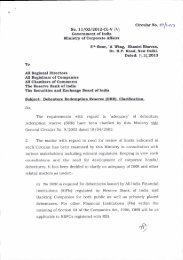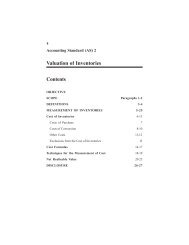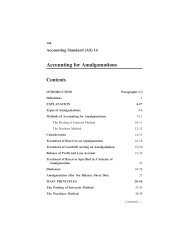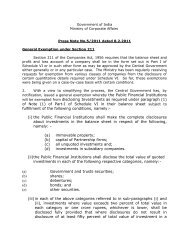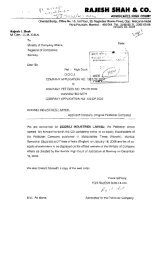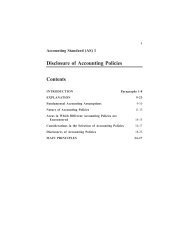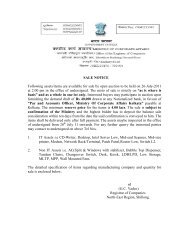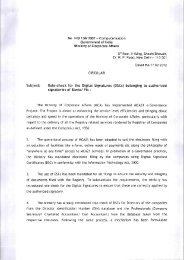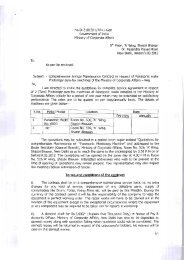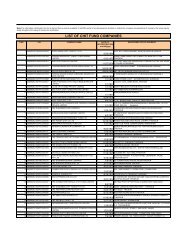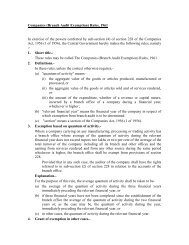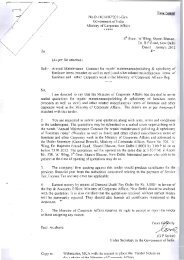Indian Accounting Standards(Ind AS) 1
Indian Accounting Standards(Ind AS) 1
Indian Accounting Standards(Ind AS) 1
You also want an ePaper? Increase the reach of your titles
YUMPU automatically turns print PDFs into web optimized ePapers that Google loves.
(a) total comprehensive income for the period, showing separately the<br />
total amounts attributable to owners of the parent and to noncontrolling<br />
interests;<br />
(b) for each component of equity, the effects of retrospective application<br />
or retrospective restatement recognised in accordance with <strong>Ind</strong> <strong>AS</strong> 8;<br />
(c) [Refer to Appendix 1]<br />
(d) for each component of equity, a reconciliation between the carrying<br />
amount at the beginning and the end of the period, separately<br />
disclosing each changes resulting from:<br />
(i) profit or loss;<br />
(ii) each item of other comprehensive income;<br />
(iii) transactions with owners in their capacity as owners, showing<br />
separately contributions by and distributions to owners and<br />
changes in ownership interests in subsidiaries that do not result<br />
in a loss of control; and<br />
(iv) any item recognised directly in equity such as amount<br />
recognised directly in equity as capital reserve with paragraph<br />
36A of <strong>Ind</strong> <strong>AS</strong> 103.<br />
Information to be presented in the statement of changes in equity<br />
which is a part of the balance sheet or in the notes<br />
106A For each component of equity an entity shall present, either in the<br />
statement of changes in equity or in the notes, an analysis of other<br />
comprehensive income by item (see paragraph 106 (d) (ii)).<br />
107 An entity shall present, either in the statement of changes in equity or in<br />
the notes, the amount of dividends recognised as distributions to owners<br />
during the period, and the related amount of dividends per share.<br />
108 In paragraph 106, the components of equity include, for example, each class<br />
of contributed equity, the accumulated balance of each class of other<br />
comprehensive income and retained earnings.<br />
109 Changes in an entity’s equity between the beginning and the end of the<br />
reporting period reflect the increase or decrease in its net assets during the<br />
period. Except for changes resulting from transactions with owners in their<br />
capacity as owners (such as equity contributions, reacquisitions of the entity’s<br />
own equity instruments and dividends) and transaction costs directly related to<br />
such transactions, the overall change in equity during a period represents the<br />
total amount of income and expense, including gains and losses, generated by<br />
the entity’s activities during that period.<br />
110 <strong>Ind</strong> <strong>AS</strong> 8 requires retrospective adjustments to effect changes in accounting<br />
policies, to the extent practicable, except when the transition provisions in<br />
another <strong>Ind</strong> <strong>AS</strong> require otherwise. <strong>Ind</strong> <strong>AS</strong> 8 also requires restatements to<br />
correct errors to be made retrospectively, to the extent practicable.<br />
Retrospective adjustments and retrospective restatements are not changes in<br />
23



